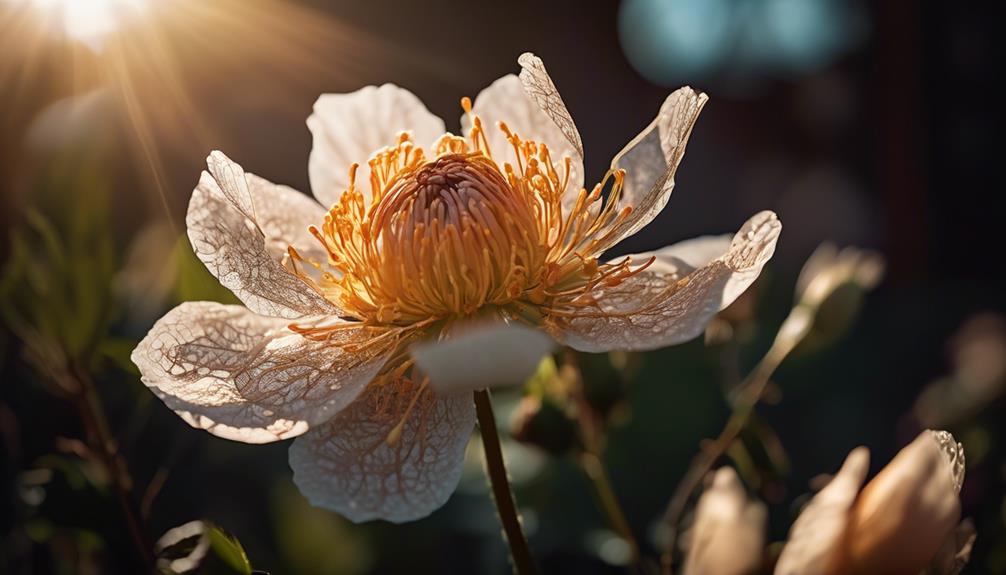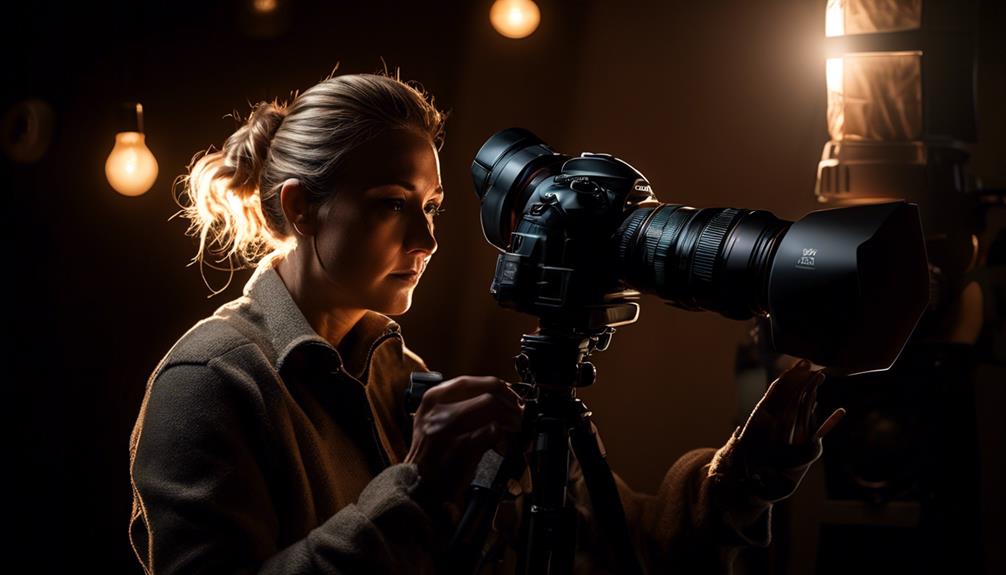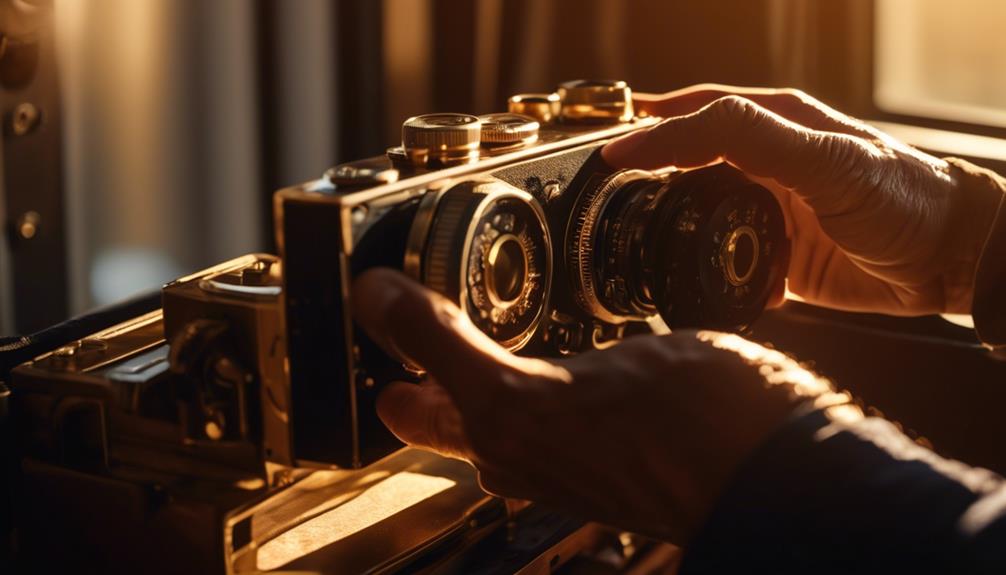Please note this post may contain affiliate links picked by me (Jay) that I have deemed may be of interest or relevant to you the reader of this.
These links do not affect the cost of the thing if you decide to purchase but i may get a little money if you choose to purchase.
For more information on my affiliate link policy click here.
Understanding the power of light exposure is like unlocking a whole new world in photography. It's not just about capturing a moment, but about transforming it into something extraordinary.
In this discussion, I will reveal some remarkable techniques that will elevate your photography to new heights through the manipulation of light. From harnessing the beauty of natural light to mastering the art of artificial lighting, we will explore how different lighting techniques can create stunning and dramatic effects in your photos.
But that's not all – I will also share some invaluable tips for achieving balanced exposures in challenging lighting conditions.
So, prepare to embark on a journey that will revolutionize the way you capture the world around you.
Key Takeaways
- Exposure compensation techniques allow for manual adjustment of exposure level
- Understanding the exposure triangle (aperture, shutter speed, and ISO) is crucial for manipulating exposure for different effects
- Utilizing natural light during the golden hour can create soft and warm lighting for landscapes and portraits
- Mastering artificial lighting techniques, such as continuous lighting and strobe lighting, can help freeze motion and create crisp images
Understanding the Basics of Exposure
Understanding the basics of exposure is essential for capturing stunning photographs that effectively utilize light and convey the desired mood and atmosphere. In order to master exposure, it's important to familiarize yourself with exposure compensation techniques and the exposure triangle.
Exposure compensation techniques allow you to override the camera's automatic exposure settings and adjust the exposure level manually. This is particularly useful in situations where the lighting conditions are challenging, such as high contrast scenes or backlit subjects. By increasing or decreasing the exposure compensation, you can ensure that your subject is properly exposed, resulting in a well-balanced image.
The exposure triangle is a concept that relates to the three key elements of exposure: aperture, shutter speed, and ISO. Understanding how these three factors work together is crucial for achieving the desired exposure in your photographs. The aperture determines the amount of light that enters the camera through the lens, the shutter speed controls the duration of the exposure, and the ISO determines the sensitivity of the camera's sensor to light. By adjusting these settings, you can manipulate the exposure to create different effects, such as freezing motion or capturing long exposures.
Mastering exposure requires practice and experimentation. Don't be afraid to try different exposure compensation techniques and explore the possibilities of the exposure triangle. Embrace innovation and push the boundaries of what's traditionally considered correct exposure. Remember, photography is an art form, and by understanding the basics of exposure, you have the power to create unique and compelling images that truly stand out.
Utilizing Natural Light to Enhance Your Photos
Natural light is a powerful tool that can elevate your photography and add a touch of magic to your photos. When used effectively, it has the ability to create stunning images that capture the beauty of the world around us.
Here are five techniques that can help you utilize natural light to enhance your photos:
- Capturing Golden Hour Moments: The golden hour, which occurs during the first and last hour of sunlight in a day, offers soft, warm, and flattering light. Take advantage of this time to capture breathtaking landscapes, portraits, and still life images. The warm tones and gentle shadows created by the golden hour light can add depth and dimension to your photographs.
- Maximizing Light Diffusion: One way to enhance your photos is by maximizing light diffusion. Diffusing natural light softens harsh shadows and creates a more even and pleasing illumination. You can achieve this by using diffusers, such as translucent umbrellas or softboxes, to spread the light and create a beautiful, soft glow.
- Utilizing Window Light: Window light can be a great source of natural light for indoor photography. Position your subject near a window and experiment with different angles to find the most flattering light. You can also use curtains or blinds to control the intensity and direction of the light.
- Exploring Backlighting: Backlighting occurs when the main source of light is behind your subject. This technique can create a beautiful and dramatic effect, with a halo of light surrounding your subject. Experiment with different angles and compositions to achieve stunning silhouettes or to highlight the details and textures of your subject.
- Using Reflectors: Reflectors are a simple yet effective tool for manipulating natural light. They bounce light back onto your subject, filling in shadows and creating a more balanced and evenly lit image. You can use a white reflector for a soft and natural fill light, or experiment with silver or gold reflectors for a more dramatic and warm effect.
Mastering the Art of Using Artificial Lighting
I've always been fascinated by the art of using artificial lighting to create stunning photographs that capture the essence of a subject. The ability to manipulate light and create different moods and effects is truly empowering as a photographer. When it comes to low light situations or working in a studio setting, mastering the use of artificial lighting becomes even more crucial.
To help you navigate the world of artificial lighting, I've compiled a table below that highlights some common types of artificial lighting and their characteristics:
| Type of Artificial Lighting | Characteristics |
|---|---|
| Continuous Lighting | Provides a constant light source, making it easier to see the effect of lighting in real-time. Great for beginners and video shoots. |
| Strobe Lighting | Produces short bursts of intense light, perfect for freezing motion and capturing crisp images. Commonly used in studio photography. |
| LED Lighting | Energy-efficient and versatile, LED lights offer a wide range of color temperatures and can be easily controlled. Ideal for both photography and videography. |
| Softbox | Softens and diffuses light, creating a gentle and flattering illumination. Often used for portrait photography to achieve a more even and natural-looking light. |
| Umbrella | Bounces light off its surface, providing a soft and indirect illumination. Widely used for product photography and creating soft shadows.
Mastering the art of using artificial lighting takes practice and experimentation. Understanding the characteristics of different types of artificial lighting can help you achieve the desired effects in your photographs. Whether you're working in low light situations or in a studio environment, artificial lighting opens up a world of possibilities for creating captivating images. So go ahead, explore and innovate with artificial lighting, and elevate your photography to new heights.
Exploring Different Lighting Techniques for Dramatic Effects
To create captivating and dramatic effects in your photographs, experimenting with different lighting techniques is essential. The right lighting can transform an ordinary image into something extraordinary, adding depth, texture, and emotion. Here are five creative lighting techniques for portrait photography and manipulating light for dynamic still life shots:
- Backlighting: Positioning your subject in front of a strong light source, such as the sun or a lamp, creates a striking silhouette effect. This technique can add drama and mystery to your portraits, highlighting the outline of your subject and creating a sense of depth.
- Rembrandt lighting: Named after the famous Dutch painter, Rembrandt lighting involves placing a single light source at a 45-degree angle to the subject. This technique creates a triangular patch of light on one side of the face, with the other side in shadow. It adds a touch of elegance and sophistication to your portraits.
- Split lighting: Split lighting involves positioning the light source directly to the side of the subject, resulting in half of the face being well-lit and the other half in shadow. This technique creates a bold and dramatic effect, emphasizing the contrasts and contours of the subject's face.
- Low-key lighting: Low-key lighting is characterized by dark and moody tones, with minimal light illuminating the subject. By using a single light source and strategically placing it to cast shadows, you can create a mysterious and intense atmosphere in your portraits.
- High-key lighting: In contrast to low-key lighting, high-key lighting is bright and airy, with a soft and even distribution of light. This technique is often used in fashion and beauty photography to create a fresh and youthful look.
Tips for Achieving Balanced Exposures in Challenging Lighting Conditions
When faced with challenging lighting conditions, achieving balanced exposures in your photographs can be a tricky but rewarding task. However, with a few tips and techniques, you can overcome these hurdles and capture stunning images even in the most difficult lighting situations.
One effective method for achieving balanced exposures in outdoor portraits is by using reflectors. Reflectors are versatile tools that can help you control and manipulate light to your advantage. They come in various sizes and colors, allowing you to bounce light onto your subject, fill in shadows, and create a more even lighting across the entire frame. By positioning a reflector strategically, you can achieve a well-exposed portrait with a pleasing balance of light and shadow.
In low light situations, controlling exposure becomes crucial. One technique you can employ is adjusting your camera's settings to compensate for the lack of light. Start by increasing your ISO to a higher value, which will make your camera more sensitive to light. However, be mindful of the increased noise that may result from higher ISO settings. Additionally, you can widen your aperture to allow more light to enter the camera, or use a slower shutter speed to capture more light over a longer period of time.
Experimenting with these techniques and finding the right balance for each unique lighting condition won't only enhance your creativity but also elevate the quality of your photographs. Remember, photography is an art form that thrives on innovation and pushing boundaries. So embrace the challenges of challenging lighting conditions, and let your creativity shine through.
Frequently Asked Questions
What Are the Different Camera Settings That Affect Exposure?
Adjusting exposure settings is crucial for capturing stunning photographs in different lighting conditions. Knowing how to manipulate aperture, shutter speed, and ISO can significantly impact the final result.
Additionally, using exposure compensation allows you to fine-tune exposure to achieve the desired outcome. By mastering these techniques, you can elevate your photography to new heights, capturing moments with perfect clarity and depth.
Don't be afraid to experiment and push the boundaries of light exposure—it's the key to unlocking innovation in your art.
How Can I Effectively Use Backlighting to Create a More Dynamic Photograph?
When it comes to creating dynamic and captivating photographs, one technique that I absolutely love is using backlighting.
It's all about playing with light and creating depth in your shots. By positioning your subject in front of a strong light source, such as the sun, you can achieve a beautiful halo effect and create a sense of drama and intrigue.
It's a simple yet powerful technique that can really elevate your photography to the next level.
What Are the Advantages of Using Artificial Lighting Over Natural Lighting?
Using artificial lighting in photography can offer several advantages.
It allows for greater control over the lighting conditions, ensuring consistent results even in challenging environments.
Artificial lighting can also be used to create dramatic effects and enhance the mood of a photograph.
However, it's important to consider the disadvantages as well.
Artificial lighting can be expensive, cumbersome to set up, and may not always provide the same natural look as natural lighting.
Are There Any Specific Lighting Techniques That Work Best for Portrait Photography?
Utilizing reflectors for portrait photography and creating dramatic effects with side lighting in portraits are some specific lighting techniques that work best for portrait photography.
Reflectors help to bounce light onto the subject, reducing shadows and creating a more even and flattering lighting.
Side lighting, on the other hand, can add depth and dimension to the portrait, creating a dramatic and striking effect.
These techniques elevate the photography by enhancing the subject's features and adding a touch of creativity to the overall composition.
What Are Some Tips for Achieving a Balanced Exposure When Shooting in Low Light Situations?
When shooting in low light situations, there are some tips and techniques that can help you achieve a balanced exposure.
It's important to use a wide aperture to let in as much light as possible, and adjust your ISO to a higher setting.
Additionally, using a tripod can help stabilize your camera and prevent blur.
Don't be afraid to experiment with different lighting sources, such as using a flashlight or reflector to add some extra light to your subject.
Conclusion
In conclusion, mastering the techniques of light exposure can greatly elevate your photography skills. By understanding the basics of exposure, utilizing natural and artificial lighting, and exploring different lighting techniques, you can create stunning and dramatic effects in your photos.
For example, imagine capturing a portrait in the soft golden light of the sunset, highlighting the subject's features and creating a warm and intimate atmosphere.
With practice and experimentation, you can truly transform your photography through the power of light.


